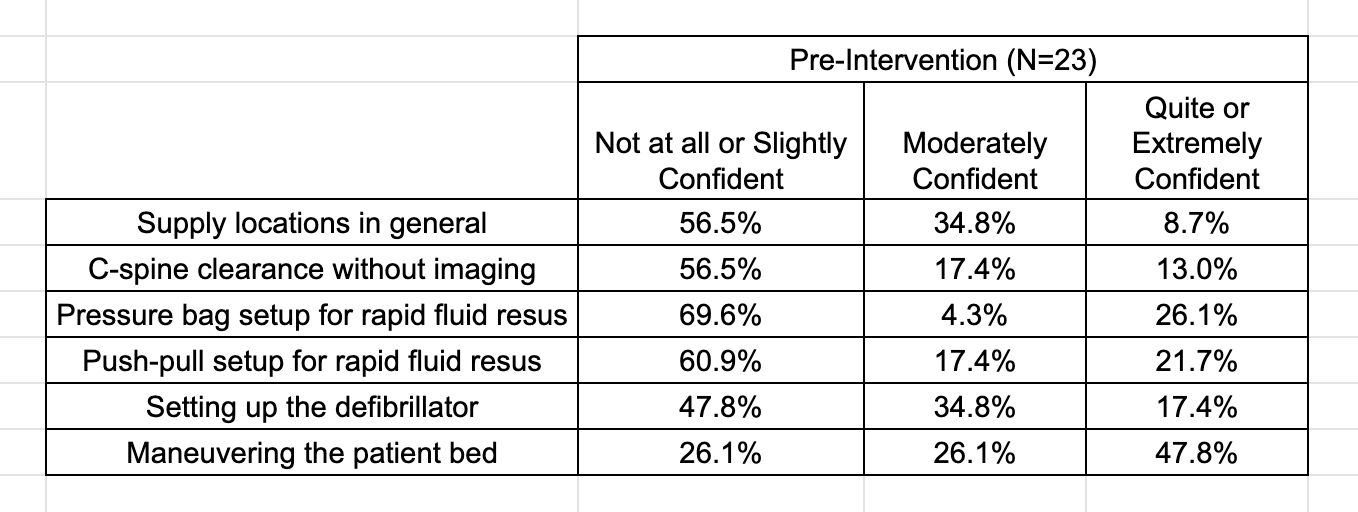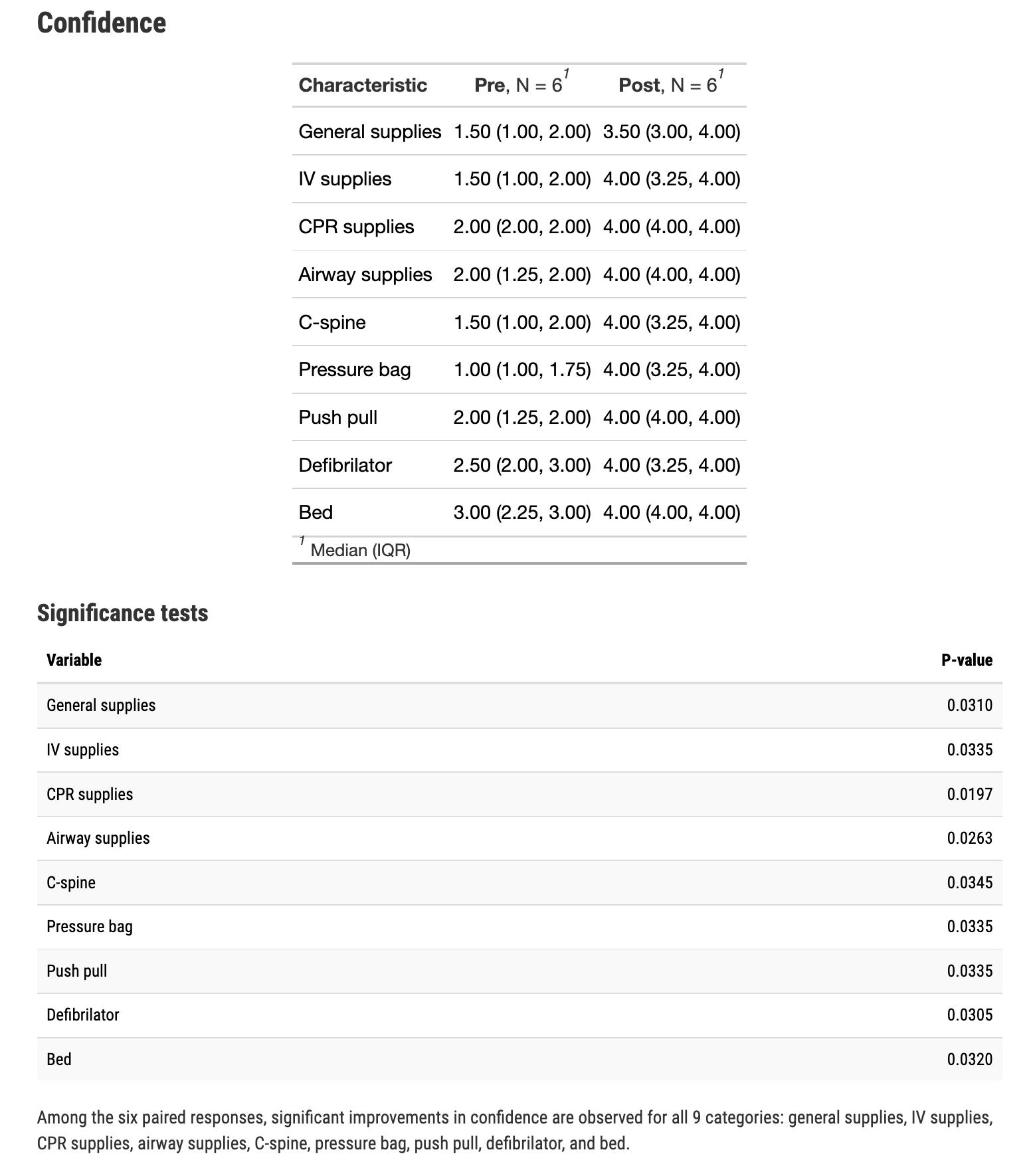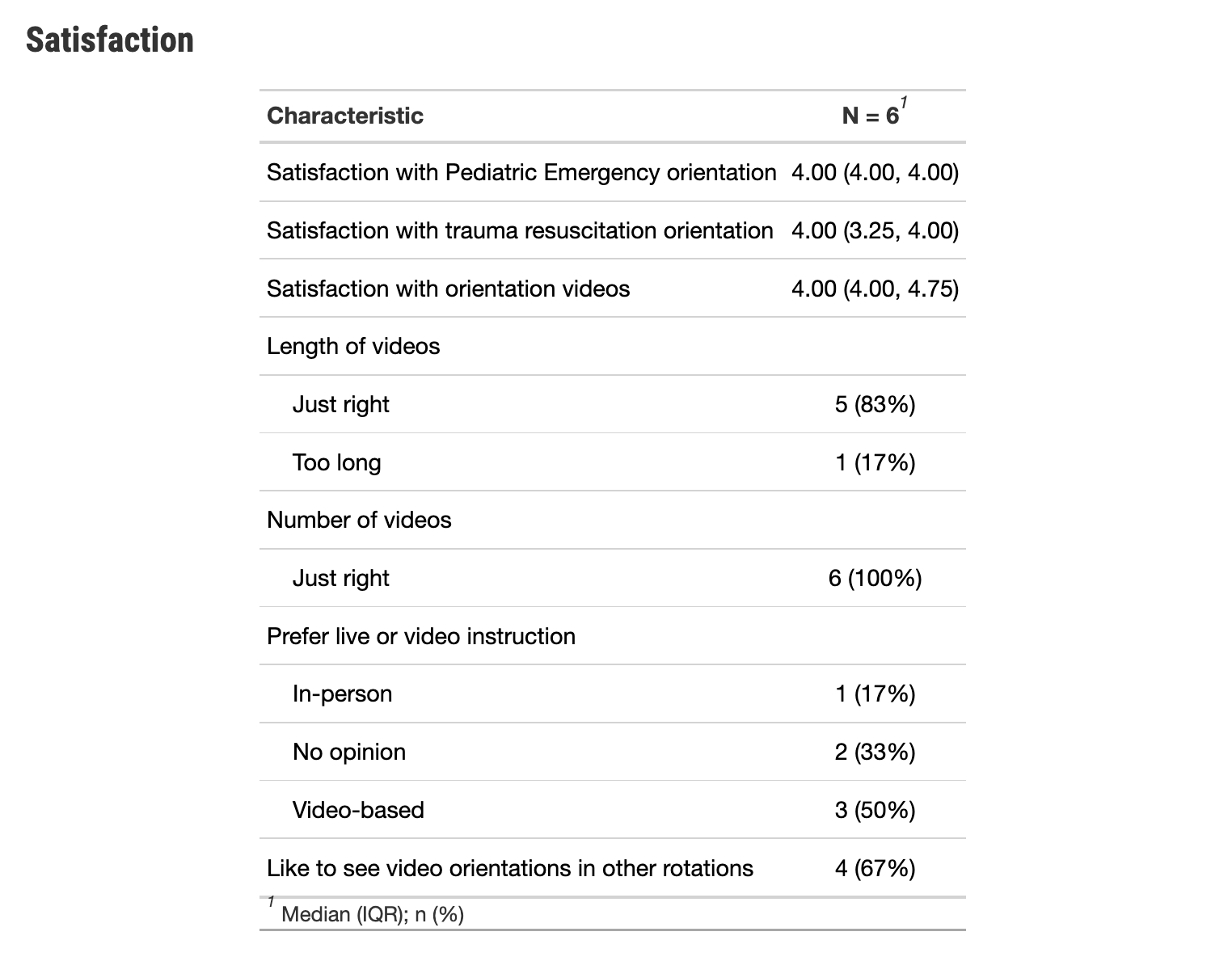Medical Education: Resident
Medical Education 15: Resident 6
514 - Trauma Readiness Assessment in the Emergency Department (TRAinED) Using A Self-Paced, Video-Based Orientation
Publication Number: 514.423

P. Zhen Chan, MD MBA (he/him/his)
PGY-3
NewYork-Presbyterian Komansky Children’s Hospital
Weill Cornell Medicine
New York, New York, United States
Presenting Author(s)
Background: Orienting residents to critical resuscitations in the pediatric emergency department (ED) faces many barriers including high frequency of resident turnover and variability in time and comfort with teaching on shift. Scant literature suggests that a self-guided, video-based approach can be used to overcome these obstacles.
Objective:
To study the use of a self-paced, video-based orientation to increase pediatric resident confidence and knowledge in pediatric trauma resuscitations. Of the 32 residents who have rotated through the pediatric emergency room since the release of the orientation videos, 23 completed the pre-intervention survey, and 6 completed the post-intervention. Of the 23 resident pre-survey respondents, more than 50% reported being not at all or only slightly confident in most measurements (Figure 1). The 6 residents completing both surveys demonstrated a significant increase in confidence levels after watching the videos (figure 2). Knowledge assessment scores trended positively from an average of 50% to 82%, but with a p-value of 0.1. All 6 reported satisfaction with the video-based orientation (figure 3).
Design/Methods: We created ten videos related to critical resuscitation, including room layout and common procedures, which were distributed through an online platform to pediatric residents at our institution upon starting their pediatric emergency medicine rotation. Residents had unlimited access to the videos, which ranged from 1-9 minutes. Residents completed surveys via REDCAP before and after completing the videos, asking to self-report confidence levels and satisfaction with orientation, answer knowledge-based multiple-choice questions, and provide open-ended feedback. Paired Wilcoxon signed-rank test was used to compare confidence levels and paired Wilcoxon ranked sum test to compare knowledge assessment scores.
Results:
Conclusion(s): Residents frequently report not being confident in many aspects of trauma resuscitations. This orientation raised reported confidence in awareness of supply locations, room layout, and ability to perform crucial common procedures. Resident knowledge also improved after orientation, but due to the small sample size, this did not reach significance. This orientation method provides a predetermined, standardized collection of information, is accessible to trainees at all times, and was rated favorably by residents who completed the videos. While overcoming the many challenges of in-person orientation, this method faces its own set of limitations, most notably the need to watch the orientation outside of scheduled work hours. 


